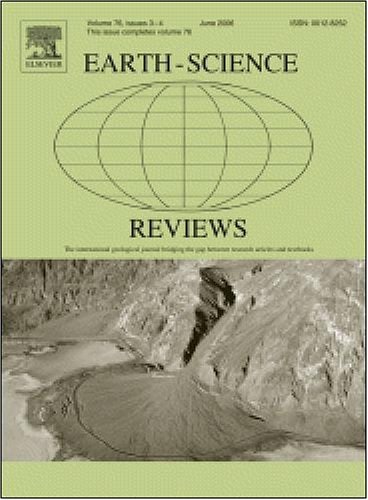自后生动物兴起以来,特殊化石保存的关键模式
IF 10.8
1区 地球科学
Q1 GEOSCIENCES, MULTIDISCIPLINARY
引用次数: 0
摘要
Konservat-Lagerstätten的综合汇编显示,自后生动物化石记录开始以来,它们的组织分为两个主要的环境和保存周期。埃迪卡拉纪-石炭纪的标志是节肢动物、蠕虫和壳类无脊椎动物的主要保存,这些动物通常被压缩、黄铁矿化或磷化,存在于以硅质塑料为主的海洋沉积物中。相比之下,二叠纪-第四纪的特征是节肢动物、壳类无脊椎动物、脊椎动物和植物的保存,主要是在非海相沉积中的压痕和压痕。具有独特保存模式的独特的短暂间隔(持续数百万年)发生在过渡期间。这些旋回受到全球海平面变化和大陆内地区海侵的强烈影响,显著影响环境和沉积参数。相反,进化枝和大规模灭绝事件似乎对保存矿床的形成有最小的直接影响。我们的数据挑战了人们普遍认为的微生物席在埃迪卡拉纪之后变得罕见且与化石保存无关的观点,表明这些生物沉积结构在保存矿床的形成中起着至关重要的作用。最后,对数据库进行抽样偏倚检验,加权数据与无偏数据的偏差最小,增强了分析的可靠性。本文章由计算机程序翻译,如有差异,请以英文原文为准。

Key patterns in exceptional fossil preservation since the rise of metazoans
A comprehensive compilation of Konservat-Lagerstätten reveals their organization into two major environmental and preservation cycles since the dawn of the metazoan fossil record. The Ediacaran–Carboniferous interval is marked by the predominant preservation of arthropods, worms, and shelly invertebrates, typically found compressed, pyritized, or phosphatized within siliciclastic-dominated marine deposits. In contrast, the Permian–Quaternary interval is marked by the preservation of arthropods, shelly invertebrates, vertebrates, and plants, primarily as impressions and compressions in siliciclastic non-marine deposits. Distinct, short-lived intervals (lasting millions of years) with unique preservation patterns occur during transitions. These cycles are strongly influenced by global sea level changes and transgressions over intracontinental areas, significantly affecting environmental and depositional parameters. Conversely, the evolution of clades and mass extinction events appear to have minimal direct influence on the formation of conservation deposits. Challenging the common belief that microbial mats became rare and irrelevant to fossil preservation after the Ediacaran, our data indicate specific periods where these biosedimentary structures played a crucial role in the formation of conservation deposits. Finally, the database was tested for sampling bias, and the weighted data showed minimal deviation from the unbiased data, reinforcing the reliability of the analyses.
求助全文
通过发布文献求助,成功后即可免费获取论文全文。
去求助
来源期刊

Earth-Science Reviews
地学-地球科学综合
CiteScore
21.70
自引率
5.80%
发文量
294
审稿时长
15.1 weeks
期刊介绍:
Covering a much wider field than the usual specialist journals, Earth Science Reviews publishes review articles dealing with all aspects of Earth Sciences, and is an important vehicle for allowing readers to see their particular interest related to the Earth Sciences as a whole.
 求助内容:
求助内容: 应助结果提醒方式:
应助结果提醒方式:


